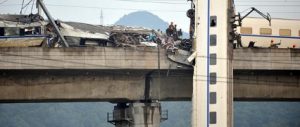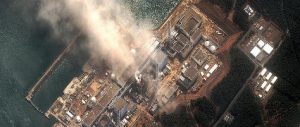In mid-June, following a 15-month moratorium on construction of new nuclear facilities, China published the results of a nuclear safety audit and a fresh nuclear safety plan, signalling a possible end to the post-Fukushima freeze.
Since the days following Japan’s nuclear disaster in March last year, the number of countries to halt construction or operation of nuclear-power plants has grown, while the global nuclear industry has pinned its hopes on China coming back into the fray. Is it the case, then, as many believe, that construction will soon restart in China?
An uphill start
The launch of the new safety strategy has certainly had an impact on the industry. Four days after the plan was approved, investors pumped 400 million yuan (US$63 million) of funding into the Pengze nuclear plant in south-east China’s Jiangxi province, on which work stopped 15 months ago. CNNC Nuclear Power, a China National Nuclear Corporation (CNNC) subsidiary, passed a pre-listing environmental audit. Market analysts, meanwhile, have started recommending the purchase of nuclear shares.
Despite the flurry of activity, the industry itself appears unusually reticent. The main reason is that an updated “medium to long-term development plan” for China’s nuclear power sector – also awaited by the industry – was not released alongside the safety strategy. One CNNC insider who wished to remain anonymous said the firm regards that plan as the key to an industry revival, and is unexcited by the safety materials. The source added that the listing of CNNC Nuclear Power had been long in the planning, and the environmental audit is just one stage in that process.
The original version of the development plan was published in October 2007 and set a target for 40 gigawatts of nuclear-generating capacity by 2020. But after the crisis at Fukushima, the State Council – China’s highest organ of state power – imposed changes. Then, on May 10 this year, Qian Zhimin, deputy head of the National Energy Administration (NEA), announced that both the safety strategy and the “medium to long-term development plan” had been approved by the NEA and passed on to the National Development and Reform Commission, the country’s top economic planner.
But at a State Council meeting on May 31, only the safety plan was passed. There was no sign of the development plan. One expert close to the nuclear policymaking process, who asked to remain anonymous, said it may still be some time before China sees its much touted nuclear spring. “For the sake of stability, nuclear construction is unlikely to get started soon,” the source said.
This position is closely linked to public fears over nuclear power, stirred by the Fukushima crisis. Early in the year, the government of Wangjiang county, near the Pengze nuclear plant, filed an official complaint about the facility being built across the river, suggesting public opinion can affect official attitudes.
Policymakers are acutely aware of the public’s concerns. Around the world, whether or not to press ahead with new nuclear has become a deeply politicised question, and with China in the midst of a leadership change, officials are being cautious.
And so the nuclear industry has been left to stew. Gu Zhongmao, deputy head of the technology committee at the China Institute of Atomic Energy, said nuclear equipment suppliers had been worst hit by the standstill. A stop on their business operations of more than a year has left these players in dire straits. Overseas suppliers have also been affected: Chinese firms are attempting to cancel contracts for equipment for shelved plants under force majeure clauses (which can free parties to a contract from liability in extraordinary circumstances) while the suppliers concerned argue policy change is not something that can trigger force majeure. International mediation is being used to resolve the disputes.
Persisting safety concerns
After the Japanese nuclear crisis, China launched an extensive audit of nuclear safety. Publication of the results was delayed more than once. When the final report eventually appeared, it said that China’s nuclear facilities are basically safe, but that vulnerabilities to extreme natural disaster – such as the tsunami which hit the Fukushima nuclear plant – remain.
An experimental reactor 100 kilometres from the site of the 2008 Wenchuan earthquake had to be shut down manually after the quake as it had not been adequately “earthquake proofed”, according to media reports. China’s new safety plan states that the design of experimental reactors should be revaluated in the light of this, and improvements made where necessary.
Many industry experts and employees agree with the audit’s conclusion that the industry is “safe overall” and hope that the report will help get construction back on track. Qian Jihui, former vice-president of the International Atomic Energy Agency, said a wider safety net will be built into China’s nuclear-power sector as a result of the new strategy, reducing the already highly unlikely chance of a reactor meltdown, though he noted that construction costs are also likely to rise.
But Yang Fuqiang, a senior consultant to US-based NGO the Natural Resources Defense Council argued that the report has downplayed the challenges. The audit took a long time and was complex process, he said. It’s hard to believe the issues it uncovered were so simple. China has more nuclear-power plants under construction than any other nation, but fewer engineers with experience in the nuclear sector than many other countries. “If you start so many projects at once, you can’t be sure all the teams doing the work will be up to standard,” Yang said.
The audit does not signal major problems with China’s level of nuclear technology, he added, but safety is not just a matter of technology.
Regulatory risks
Indeed, the major risks are related to management. Management errors have played a part in all of the world’s major nuclear accidents. And, in China, concerns persist over the country’s nuclear regulatory system, emergency response capability and safety culture.
Harvard University research fellow Zhou Yun is a long-time observer of Chinese nuclear reactor risk assessments and nuclear power policy and law. In 2010, she wrote a paper pointing out that China’s National Nuclear Safety Administration (NNSA) is subordinate to the Ministry of Environmental Protection, while the big state-owned nuclear power companies are managed by the State Council. This reduces the independence and authority of the regulators, he argued. NNSA does not have its own research department through which to set standards and cannot evaluate and decide on technical situations which are not covered by current law or regulations.
Fukushima pushed nations around the world to beef up their nuclear regulatory regimes. But in China there has been little change. In 2012, Yang Fuqiang passed suggestions for reform to the National Development and Reform Commission, but there has been no response.
Yang said regulators must focus on safety alone, and must not be influenced by development plans. “They should only approve technology when it is ready – targets for generating capacity should not have any impact.”
Chinese regulators are also hampered by a shortage of personnel. Fan Bi, an economist focused on the energy sector, has pointed out that China’s nuclear regulatory capacity lags badly behind, with too few staff working on nuclear safety at the NNSA and at the Commission of Science, Technology and Industry for National Defense. Regulators are paid much less than power-plant workers, which makes it harder to attract and keep staff.
This article was first published in New Century Weekly, where Cui Zheng is a reporter.
This article is republished here as part of Nuclear Enery and Developement Programme, which is supported by the Heinrich-Boell Foundation.
Homepage image by DickStock shows a sign outside Daya Bay nuclear plant in Guangdong province, south China.



